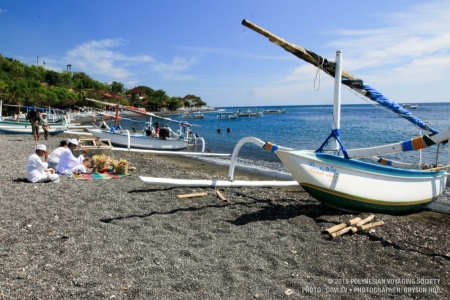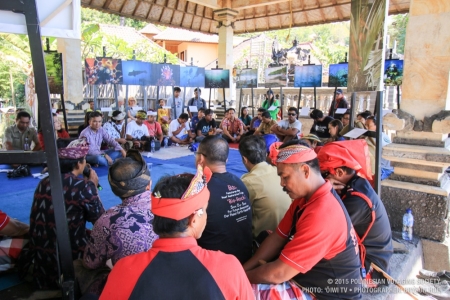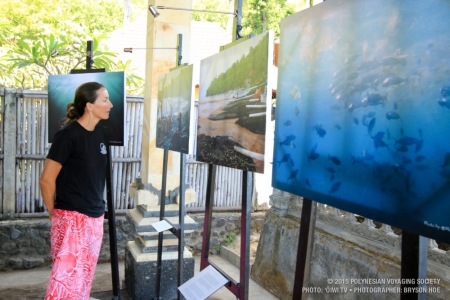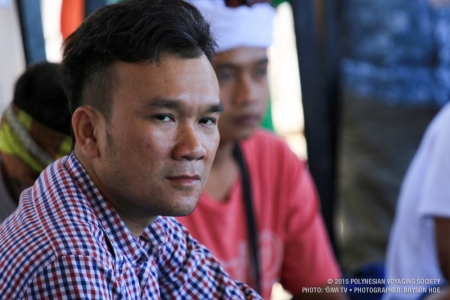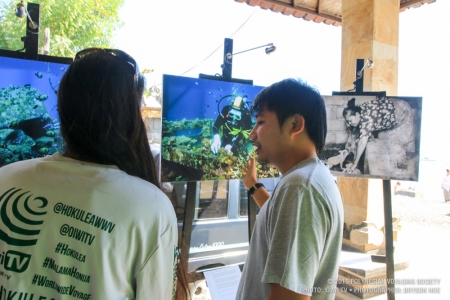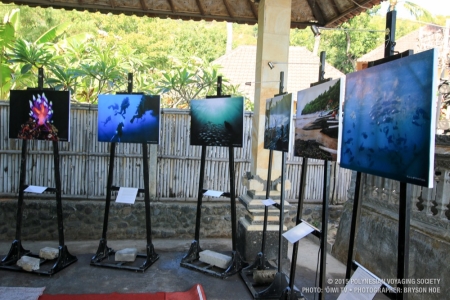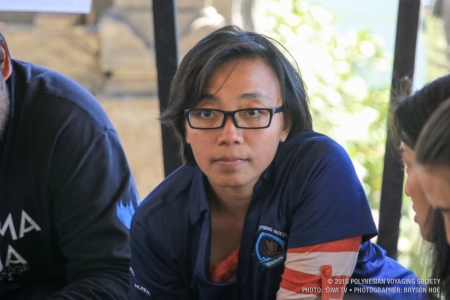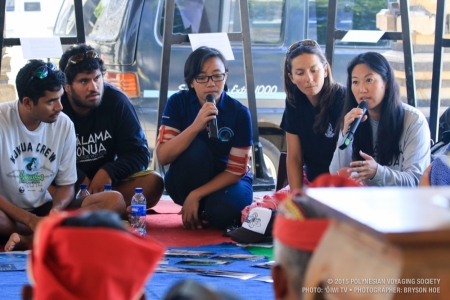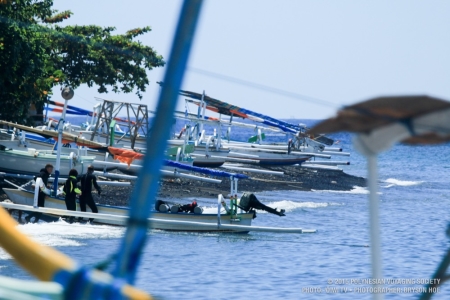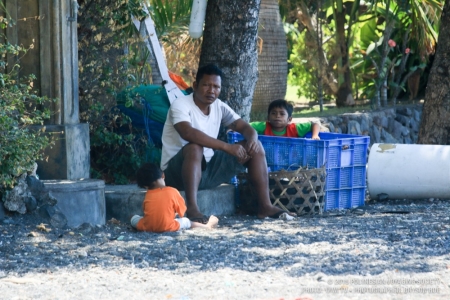
Hōkūleʻa Update | August 9, 2015
- Posted on 9 Aug 2015
- In Education, Malama Honua, Malama Honua Selects, Newsletter, Teachers, Updates
Traveling 3 hours of beautiful coastal and mountainous roads, Hōkūleʻa crewmembers visited community members of Amed, a small isolated coastal region rich in traditional fishing, salt-farming, and other ocean-related practices. We were greeted with traditional prayer and blessing, hosted by local fisherman, community members and government representatives to learn about reef and ocean issues of Amed, and invited to share about our Mālama Honua Worldwide Voyage and coastal management efforts at home in Hawaii.
In part because of its remote location and environment, Amed has historically been one of the poorest and least developed areas of Bali. Recently however, Amed turned into a bustling and growing tourist destination, one of the most popular in Bali. The boom of the tourist industry and related development, while helping to invigorate the economy in the region, has taken its toll on the reef and ocean, and the traditional fishing and salt-farming practices of the community.
Just as in the subak, community advocates, fisherman and salt farmers of the region refer to the Tri Hita Karan traditional Balinese philosophy when describing their relationship with the land and ocean. Roughly translated Tri Hita Karan is “three causes of well-being” and refers to harmony among people, harmony with nature and environment, and harmony with God. Balinese are reverent about the ocean and water, and are deeply troubled by the trash and sediment that affects the reefs due to development and inadequate infrastructure and planning. Through the organization Lens of the Community of Indonesia (LMN) and the Photovoices program, local community members were empowered to share the stories of their environment and traditional lifestyles with the world through photos. The first print of the selected photos were on display at the gathering site, for crewmembers and the public to view. Many of the community photographers were in attendance, and led discussions around particular topics that were important to them and conveyed through their photos.
Hōkūleʻa crewmembers explored the reef and ocean of Amed with local snorkeling facilitators to learn more about reef management and biodiversity in the area, including an artificial reef project that the local diving and scientific community are starting to reinvigorate the reef. We then learned from and shared with local community representatives around initiatives in Bali and Hawaiʻi that aim to balance ocean protection and cultural and environmental sustainability, with the realities of tourism and development. The Balinese ocean community commented that while our challenges are similar, they are hopeful to hear that solutions are definitely being developed. In an exciting development, members of our Sister-State Delegation reported that Amed was identified as a hope spot, where innovative programs will be piloted in partnership between the government and local community agencies to address the issues and challenges raised by the local community.
Mahalo e Bali for sharing with us your coastal management story of hope, and for allowing us to share the story of Hōkūleʻa and how so many at home work to mālama honua by taking care of our reefs, oceans, and coastal areas.
Please help keep us sailing for future generations. All contributions make a difference for our voyage. Mahalo nui loa!
